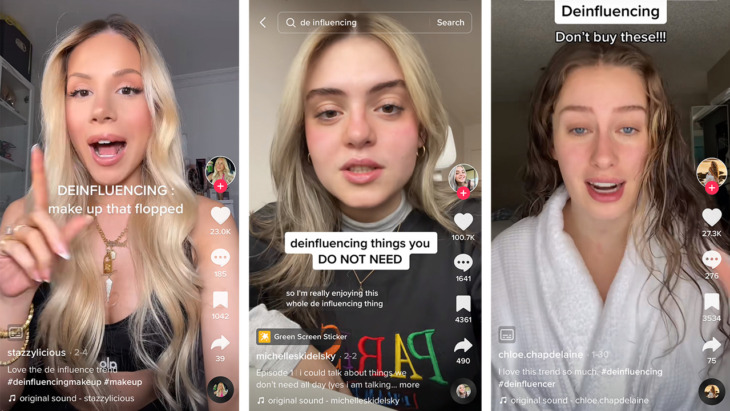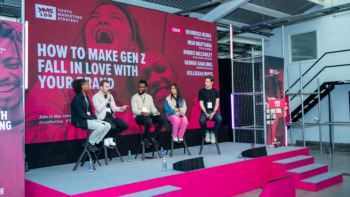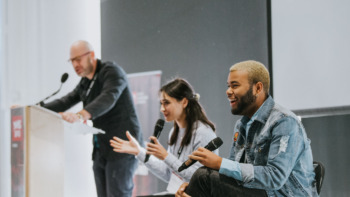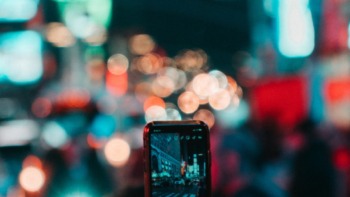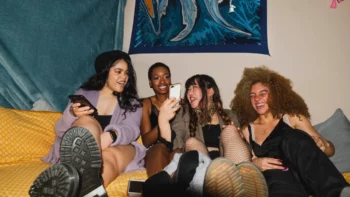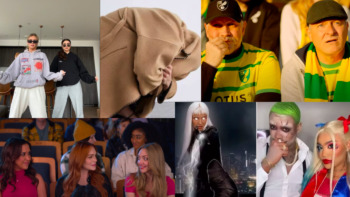Just when you thought the world of influencer marketing couldn’t reveal more subsidies, ‘de-influencers’ have infiltrated the space.
Yes, you read that right. De-influencers have become the latest trend to shift the TikTok influencer space as Gen Z leans into a lifestyle that celebrates sustainability and mindful monetary choices, amidst the cost-of-living crisis.
In this blog, we’ll share what exactly a de-influencer is, why they’re gaining traction in 2023 and what your brand needs to know as a result.
What exactly is a de-influencer?
Well, as you can guess by the name, a de-influencer is an individual who, rather than influencing users to buy products, influences users to do the exact opposite.
A trend that has grown substantially in early 2023, de-influencers urge their viewers to step back, think, and ultimately avoid buying the highly promoted (and occasionally questionable) products that populate their social media feeds.
This year alone, the #DeInfluencing hashtag has shot up from 13 million views to around 130 million, as social media stars leave the hard sell at the door and promote a more conscious form of interaction.
De-influencing can be traced back to 2020, when TikTok user Maddie Wells started a series about the most commonly returned products to her retail job.
Since then, creators (especially in the cosmetics and beauty space) have taken to their platforms to give their honest opinions on why certain products are over-hyped.
Why have de-influencers come about?
Despite the trend growing significantly in 2023, de-influencing isn’t an entirely new phenomenon.
The original, early beauty YouTubers were loved (and trusted!) for their honest reviews of products, giving candid details about what worked and what didn’t work.
This content was well received because it saved people money during the previous economic crash of 2007-2008 – in fact, it was back in 2009 that ‘honest’, often critical, fashion bloggers first appeared on the Front Row of Fashion Week. So, it’s no coincidence that the trend is picking up again during another economic crisis.
Influencers and celebrities alike have historically always faced claims about the sentiment behind their promotions (remember the Skinny Coffee scandal with Lauren Goodger, or Kim Kardashian’s weight loss lollipop?).
The difference now, however, is that consumers are wising up and placing increased scrutiny on the legitimacy of branded posts.
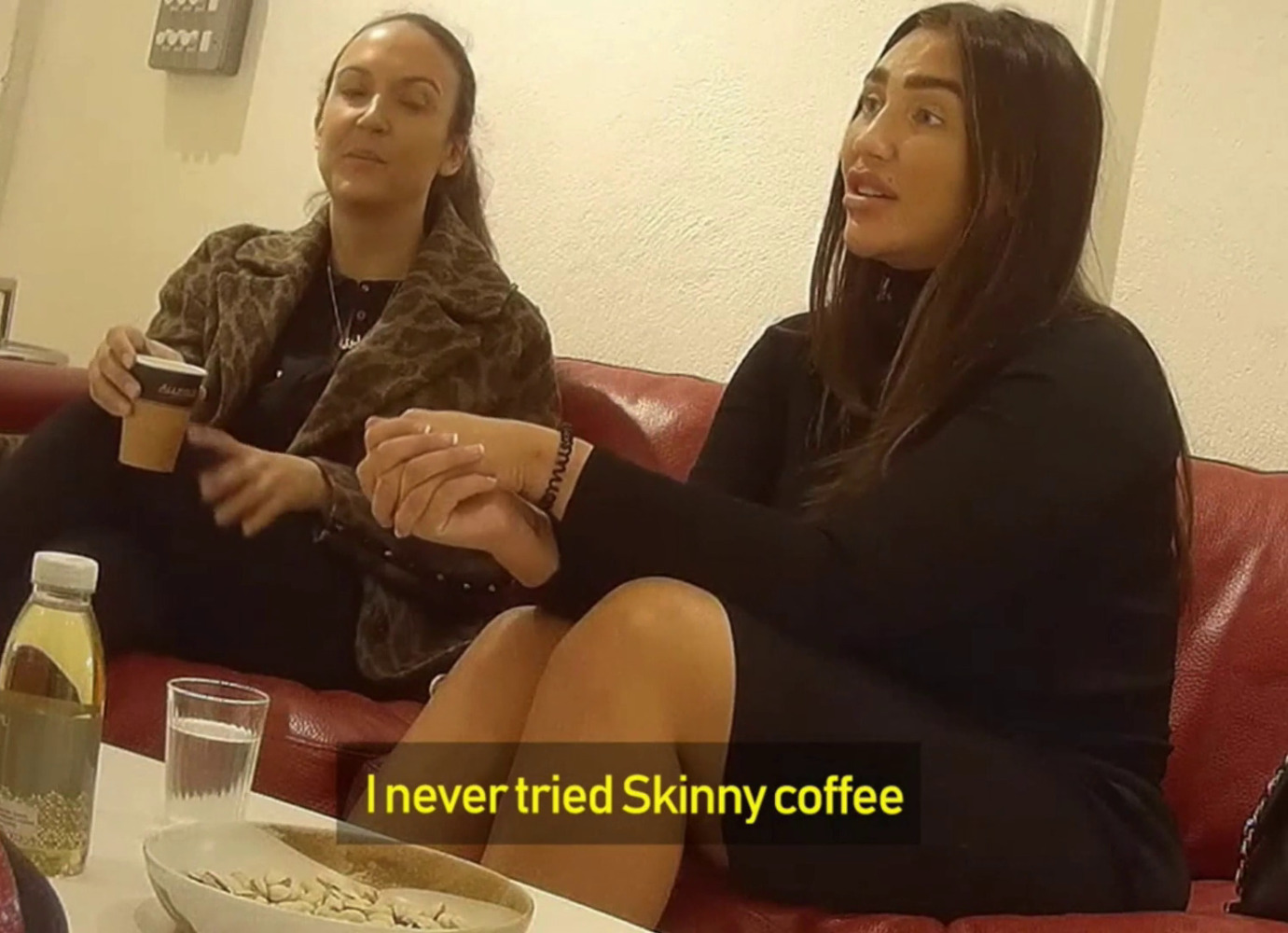
The influencer marketing industry is currently worth a massive $16 billion, so there’s certainly money to be made.
However, the landscape has become quickly saturated, and a result, many creators have been seen to ‘jump on the money train’ to endorse products that aren’t necessarily worth it.
Gen Z are becoming quickly attuned to this. They can spot an inauthentic endorsement a mile off. For influencers to continue having success within their communities, their partnerships will – rightly so – need to be both selective, and genuine.
A tough landscape for influencers
A downturn in digital advertising spend also means payouts are easing for creators. Despite YouTube offering one of the most generous programmes around (allowing creators to keep 55% of their ad revenue on their videos), YouTube’s ad revenue itself dropped almost 8% in the final months of 2022.
Creators and influencers are now fighting harder for subscribers and brand pay-outs. Performing with authenticity appears to be a quick win to reach Gen Z, who already hold a growing distrust towards ‘inauthentic’ influencers.
De-influencing videos are a cogent way to create a closer connection with viewers, often feeling as though the creator has personally gone out of their way to look out for you.
De-influencing: the sustainable solution?
Some have also argued de-influencing is a positive trend for sustainability and for tackling a culture of overconsumption.
Content creator Hudi (@thethriftythinker), has become known for calling out brands like SKIMS for being unethical and unsustainable. Hudi recently shared in a video that “there are so many brands that need your support more than a billionaire who doesn’t pay her workers when they work overtime”.
Equally, US creator @ClimateDiva has used her platform to discuss overconsumption, sharing tips in one video about items people should be cutting down on or to simply avoid buying completely.
According to the United Nations, humans collectively dump over 11.billion tonnes every single year – and a significant amount of this is clothing. Social media and influencer marketing is infused with buying culture, whether it’s a 2L water bottle for 99p or a pair of UGG dupes. These micro-trends quickly fall out of fashion, leaving individuals with products they’ll barely ever use.
De-influencing to stop overconsumption is largely a positive thing: it makes users more mindful towards buying what they actually need and draws attention to smaller, sustainable alternatives. However, unfortunately, some influencers have come under fire for using socially conscious influencing as a guise to sell more products.
As warned by Beatriz Repiso, CEO of Otternative Marketing, consumers must be aware that their attention is ‘constantly being monetised’. Some influencers have used this trend to redirect users to alternative products, often making money from affiliate links.
The cost-of-living crisis’ effect on de-influencing
We’re living in a climate where brands and influencers must be increasingly sensitive towards the economic hardship that consumers are facing. Pushing products in an overly sales-y way can appear tone deaf to many audiences, whilst consumers are quick to call out creators who flaunt extravagant lifestyles.
Even the beloved creator Alix Earle was recently subject to controversy after details emerged about her influencer trip to Dubai with cosmetics brand Tarte.
De-influencing builds upon a wider cultural shift that has propagated an ‘Eat The Rich’ narrative, according to Paul Greenwood, Head of Research and Insight at We Are Social.
Paul shared in the Guardian that creators are now taking a “money-saving expert approach”, stating that creators “know their audience better than anyone else – so if they know their audience is feeling the pinch, they’re going to react to that to try and stay on their side”.
Ruby Soave, Head of Influencer Marketing at Student Beans, says:
“Influencers know that their success and longevity is contingent on their community’s trust. Gen Z knows that most people are conscious of money right now, including creators – and that some will go to any lengths to get it.
With the current de-influencing phase in play, it’s predictable that some influencers will strategically post ‘negative’ reviews in order to appear honest, trustworthy and dependable for their audience.
“But influence can’t be constructed. Said influencers ironically risk de-influencing themselves: if this content doesn’t align with their consistent channel strategy, Gen Z will be attuned to it – and turned off. Future brand deals? Not worth it for paying brands.”
What does all of this mean for brands in 2023?
The age of de-influencing might be officially upon us, but all is not lost for brands. In fact, de-influencing can offer brands more opportunities than ever before.
Audiences are more critical about where they’re spending their money, yes, but this is just more of a reason to invest in brand building and aligning your values.
Ruby added:
“Brands need not panic regarding de-influencing. It can be a positive move: helping to protect the effectiveness of the delicate influencer ecosystem.
As marketers we have a responsibility to contribute toward best practice – and unfortunately contracts are often exchanged without the appropriate upfront conversation with talent.
Relationships are at the heart of influencer marketing. It takes some time to speak with – and truly understand – the influencer you may work with. The industry has been heavily focused on quantitative data in recent years. We must remember to blend with qualitative data – only then can we confidently contract the right brand partner.”
Brands should use this opportunity to strive for transparency and focus their energy on long-term creator partnerships.
By investing in longer term relationships with influencers and creators (primarily those who are pre-existing customers or advocates of your brand), the partnership will appear more genuine.
Finally, brands should use this opportunity to review the price points and ethics around their products. De-influencing is largely being driven by two factors: sustainability and financial instability.
Ensure you are offering consumers the best possible deals, with exclusive student discounts to reach young Gen Z consumers and offering added extras, such as free delivery. Equally, with 77% of students surveyed by Voxburner, the Student Beans insights agency revealing that they’d be more inclined to buy from a sustainable brand, it’s worth reviewing your commitment to sustainable choices.
To learn more about the hottest creator trends with exclusive insight and data from Student Beans, download our free e-guide to Grow your e-Commerce with Creator Marketing today.
Image source: www.foxbusiness.com


